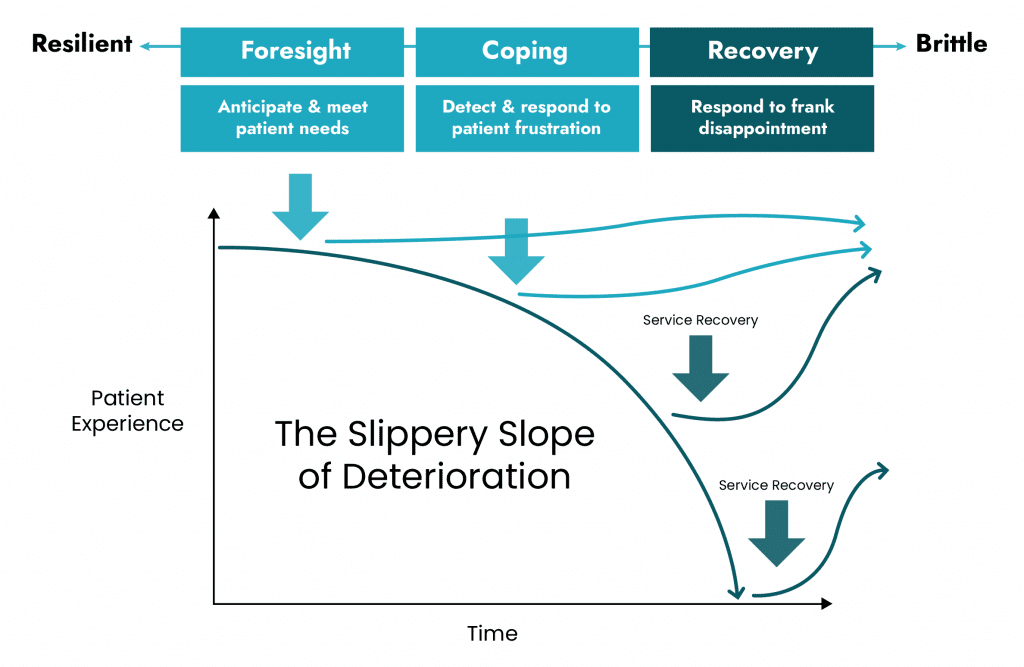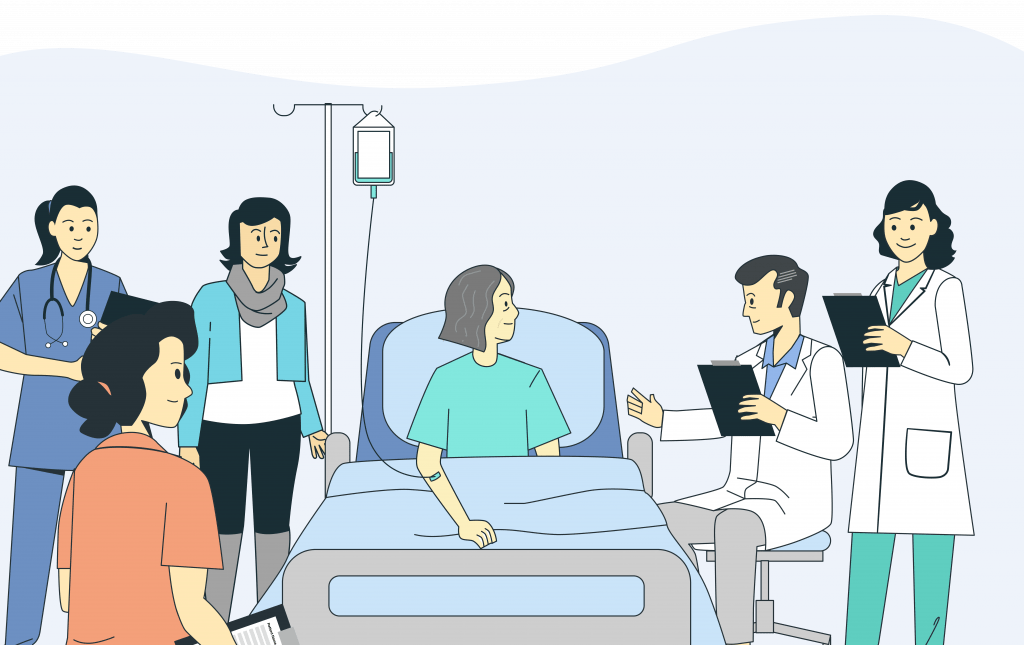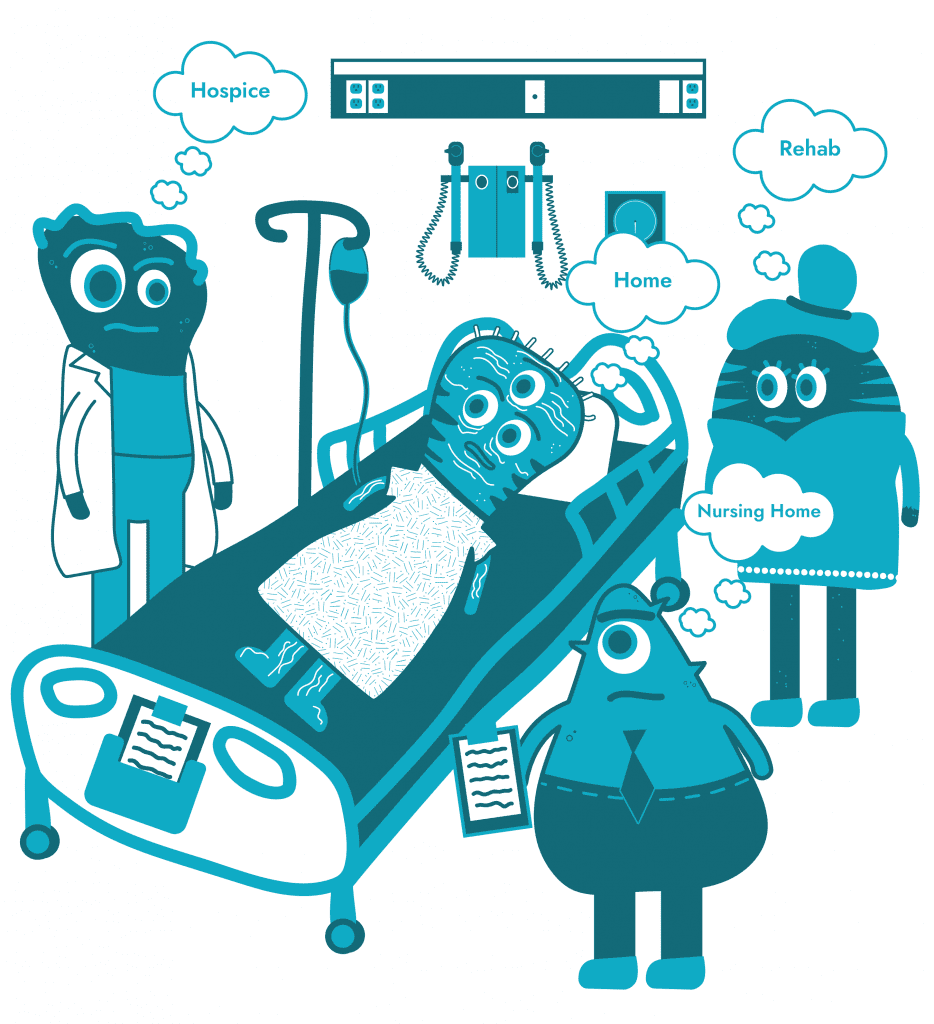
Let’s apply the concept of resilience to another scenario — a slope of deteriorating patient experience.
First, though, let’s introduce another advanced teamwork concept: cognitive empathy.
Cognitive empathy is the ability to see how a teammate — or a patient — needs help (Artman and Waern, 1998) and to take appropriate action without being asked to do so (Artman, 2000).
For teammates we show cognitive empathy by doing things that eases a physical burden (e.g., helping re-position a patient rather than standing by passively) or psychological burden (e.g., helping a teammate find 5 minutes of peace if they’re having a rough day).
For our patients we show cognitive empathy by saying or doing things that ease their frustration. Just for a minute, try thinking about patient frustration as a disease process endemic to hospitals, with predictable downward trajectory. Hospitals, after all, are places unwell people go, unhappily, to recover from a serious illness.


The most common etiology of frustration is feeling a loss of control. The onset of frustration can be sub-acute, acute, or fulminant.
Hospital teams that fail to appreciate frustration as a disease may fail to diagnose and treat it. Detecting frustration requires specific diagnostic skills:
Therapy for frustration should be aimed at its etiology – loss of control – with the following mainstays:


In other words, hospital teams can become proactive in managing patient satisfaction by using cognitive empathy for foresight (anticipating and meeting patient needs) and and coping (detecting and responding to frustration as soon as it arises).
To do this, great teams think differently about the patient, and still rely on each other to recognize the more subtle forms of frustration and respond appropriately.
What next?
Seeing is Believing
Knowledge is Power
The Wise Learn from the Wise
© 2024 • 1Unit • All rights Reserved.